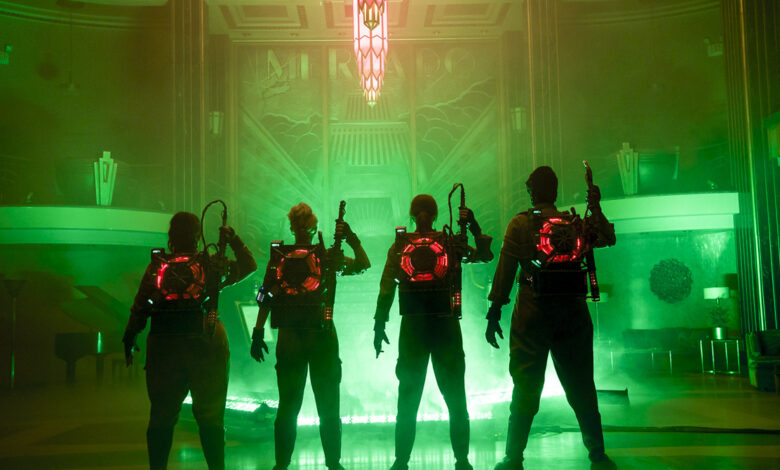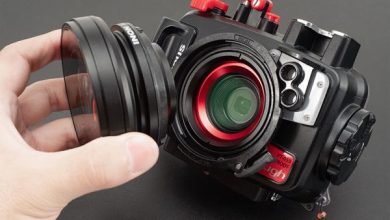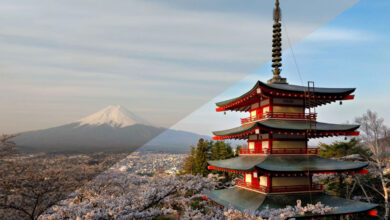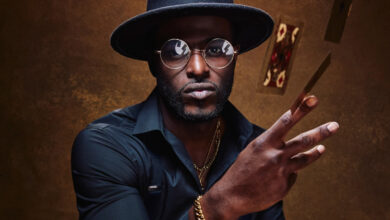The (Un)Glamorous Life of the Hollywood Still Photographer

The perceived glamorous life of a Hollywood unit still photographer is not all about meeting A-list celebrities and taking iconic cover shots of award-winning films. It’s actually a challenging endeavor that requires grit, perseverance, and a plethora of social and technical skills.
Meet Hopper Stone
Hopper Stone is an award-winning multi-hyphenate, working in the entertainment and media industries. He’s been a professional photographer since 1988, starting as a photojournalist based in Europe. In 1997, Hopper started working as an on-set photographer (aka unit still photographer) for movies and television. He has worked the gamut of productions; ranging from low-budget horror movies, to Academy Award and Emmy-nominated projects. In 2012, Hopper was awarded the Publicists Guild Award for Excellence in Television Still Photography.
Hopper is still an active member of the Society of Motion Picture Still Photographers, the board of which he served on for several years. He’s also a member of the International Cinematographers Guild.
The Backstory
Hopper’s journey to becoming one of Hollywood’s top unit still photographers started with his passion for world travel, education, and photojournalism. He honed his skills in visual storytelling through many years of working for news and media outlets around the globe.
Those experiences prepared him for a career in TV, and eventually Hollywood unit still photography. He’s captured iconic images for blockbuster movies like “Dumb and Dumber,” “Captain Phillips” with Tom Hanks, “Modern Family,” and most recently the DC superhero film, “Blue Beetle.”
The path to becoming a Hollywood still photographer is paved through many roads. There isn’t an express-lane to making it to the big leagues. It takes a lot of perseverance, dedication, and difficult productions that can push your mind and body to the limits.
However, if you can commit to the bigger picture, you can work in a field like no other; where you can capture iconic images that may become the cover-shots for award-winning Hollywood films.
The Interview
I’ve gained a lot of perspective on what it takes to become a Hollywood unit still photographer, from my nearly three hours of interviewing Hopper. He’s a wealth of knowledge for aspiring creatives who hope to shoot unit stills for major Hollywood films.
Let’s take a look at some of the valuable advice that Hopper Stone shared with me during our interview, including insight about his gear selection, relationship building, professional development, workflow process, and other on-set challenges.
The Importance of Reliable Gear
Hopper is the first Hollywood unit still photographer to ever shoot Sony mirrorless. He started shooting feature films with the original a7S, and now shoots the a9 II, a7S III, and a7R V for all of his professional work.
Being a Hollywood unit still photographer requires incredibly reliable gear that can perform in the most extreme environments. Hopper doesn’t get to choose if he’ll be shooting in heavy rain, sandstorms, or unbearably humid climates. With harsh conditions constantly testing the limits of his gear, Hopper relies on his Sony Alpha cameras to perform at the highest levels, in the most critical shoots, and in situations where he can’t afford to miss a shot.
Here are some of the reasons why Hopper chooses Sony Alpha cameras for his professional work:
- High-speed performance: crucial for capturing fast-paced action on film sets. The a9 II’s rapid autofocus and continuous shooting capabilities allow him to capture decisive moments quickly.
- Silent shooting: which is essential in the context of unit still photography. This a9 II feature allows Hopper to work discreetly, minimizing disruptions during filming, and ensuring that the sound of his camera shutter doesn’t interfere with production.
- Low-light performance: essential for on-set photography, where lighting conditions vary widely. The a7S III’s ability to produce high-quality images in challenging lighting environments makes it the ideal choice for Hopper’s low-light work.
- Reliability: crucial in the fast-paced and demanding environment of film production. There’s little room for error, and the a7R V has been vital in allowing Hopper to keep up with the rigorous demands of his work.
The Importance of Relationships
It goes without saying that building and maintaining valuable relationships is an essential part of any photography business. During our interview, Hopper made it clear that it’s even more important for aspiring unit set photographers to build strong relationships with their production photo editor.
He emphasized the value of being easy to work with and understanding the production needs of your editor. He said that you have to really consider the role that you’re playing for your photo editor as the unit still photographer, and always try to take a collaborative and service-oriented approach to your work.
You need to be able to adapt and diversify within your role, and become an invaluable resource to your production photo editor. That will ultimately make you someone that they can rely on, knowing that you always have their best interest in mind, understand their needs, and can deliver at the highest levels, with minimal direction.
Creating and building that type of relationship within the relatively small community of unit still production editors is the best way to ensure your growth and success in the industry.
Hopper may be one of the best in the business, but he tells me that he still has to compete for jobs. In a world where there’s still competition at the highest levels, my guess is that Hopper’s relationships are what keep him successful.
Shooting for Creativity
Personally, my journey as a creative began with passion. I always had a love for technology and creativity, which eventually led me to becoming a full-time creative professional.
One of the notable things that Hopper told me during our interview was: “If photography was your hobby when you decided to become a professional, make sure that you find yourself a new hobby.”
This is a crucial piece of advice that I relate to more than ever, as I find myself treating the passion that once gave me joy in my spare time as a way to earn a living. I spend almost all of my time creating now, and what Hopper says makes more and more sense every day.
I need to find new and exciting takes on creativity to keep my passion for the arts burning strong.
This piece of sage advice is essential for aspiring unit set photographers to consider in my opinion. You may eventually become less inspired by a routine and repetitive work, and the novel excitement of being on the set of a major production may wear off.
Hopper recommends that you always try and spend a bit of time shooting for your own portfolio on-set, even if the images might not be used by the studio in the end. Having this small outlet of personal creativity will keep that creative passion burning for you and will inspire you to create work that impresses and satisfies yourself as an artist.
In the end, it may also be helpful for showcasing your own unique style, and how you choose to tell a visual story.
Professional Development and Networking
One of the pivotal decisions in Hopper’s early career was to invest in professional development and education. He understood the importance of continuing to learn from, and network with professionals in his industry, and applied himself by attending a workshop on becoming a unit still photographer.
Continuing to invest in education and professional development is super important if you want to reach your goals as well. It can help you to understand more about what it takes to work in the field that you want to be in and give you valuable opportunities to network with industry professionals that can help you to advance your career.
Hopper is a firm believer in the power of workshops for learning specific skills.
He told me: “you’re never too old, or too good that you can’t take another workshop.”
Workflow and Editing
Major film productions can often take several months or longer to complete, which create massive amounts of data that Hopper needs to deal with on a daily basis.
He has a very streamlined workflow, which is usually happening during every minute of downtime that he can find on and off-set. Images are constantly being backed up to his hard drives because he’s always trying to get a head-start on creating 1:1 previews for his edits, which typically need to stay ahead of production. With consistently long hours of production every day, workflow efficiency is critical in his line of work. He needs to be on top of managing the large flow of daily media and able to turn it around quickly to meet production deadlines.
To that end, Hopper’s workflow is built to strengthen his relationships with his production photo editors. My take is that he’s always focused on lowering the burden of curation on his deliverables, shoots technically sound images with intention, and tries to cover a wide range of imagery that can be used in various final assets, like movie posters and key art.
At the end of his shooting and editing workflow, he picks the best images and sends out a highly curated set of finals to his editors, making their selection process as easy and timely as possible.
On-Set Challenges
Hopper has faced many challenges while shooting behind the scenes on feature films. He’s always balancing the need to get compelling shots with the need to be invisible for all other intents and purposes. He needs to stay out of the actor’s eyeline, so he doesn’t distract their performance, while also staying out of any other crew member’s line of sight, which they may need to do their job, such as camera assistants, dolly grips, or boom operators.
This situation is essentially somewhat of a necessary nuisance in film production, from my understanding. Marketing has a need for the imagery that Hopper creates to promote the film, but almost everyone else on-set either doesn’t want him in the way, doesn’t know he exists, or tries their best to move through production with little consideration for the support he needs to create his work.
As a result, Hopper has become adept at getting shots by doing recon of his sightline and position during rehearsals before the cameras roll, as well as by building relationships with the actors throughout production, in order to get them comfortable with being photographed by yet another camera which they may not necessarily want there.
These are just a few of the challenges of being on-set as a unit still photographer, with many others that need to be overcome and adapted to. Hopper also contends with film sets that are always backlit, making his job even more challenging. He has to contend with being invisible to the cast and crew, while also being blinded by light, and shooting in extremely high-dynamic range scenarios.
My Conclusions
I learned so much from my nearly three hours of interviewing Hopper Stone. He shared so much valuable advice and insight, spanning decades of his professional life and career. I can’t possibly share every single nugget of insight that Hopper shared in this article, but I’ve arrived at some key conclusions that I consider important for anyone who aspires to be a Hollywood unit still photographer.
If you’re wanting to pursue a career as a Hollywood unit still photographer, you better have a genuine passion for photography, a strong work ethic, and a realistic understanding of the challenges and opportunities inherent in the field.
You’ll need passion and determination to learn new skills, overcome challenges, and have realistic expectations that the job is not always about the glitz and glamor of Hollywood. This is a career that is extremely demanding on your body and spirit, requires perseverance, and can be very competitive, even at the highest levels.
In order to be successful, you need to continue to develop yourself professionally, hone your artistic vision, build and manage relationships on-set with actors, crew, and editors, while also having a service-oriented mindset that is focused on providing the maximum value with your work.
These are just a few of my conclusions from my interview with Hopper, but with so many interesting and valuable pieces of advice, we should all connect with Hopper to learn more on his Instagram at @hopper_stone and on his website at stonefoto.com.
Don’t forget to drop a comment and thank Hopper in the comments below. He’s the legendary shooter, behind the scenes on your favorite films!
Thank you Hopper for sharing your wisdom and advice with our community!
Images used with permission of Hopper Stone. Lead image courtesy of Sony Pictures.




